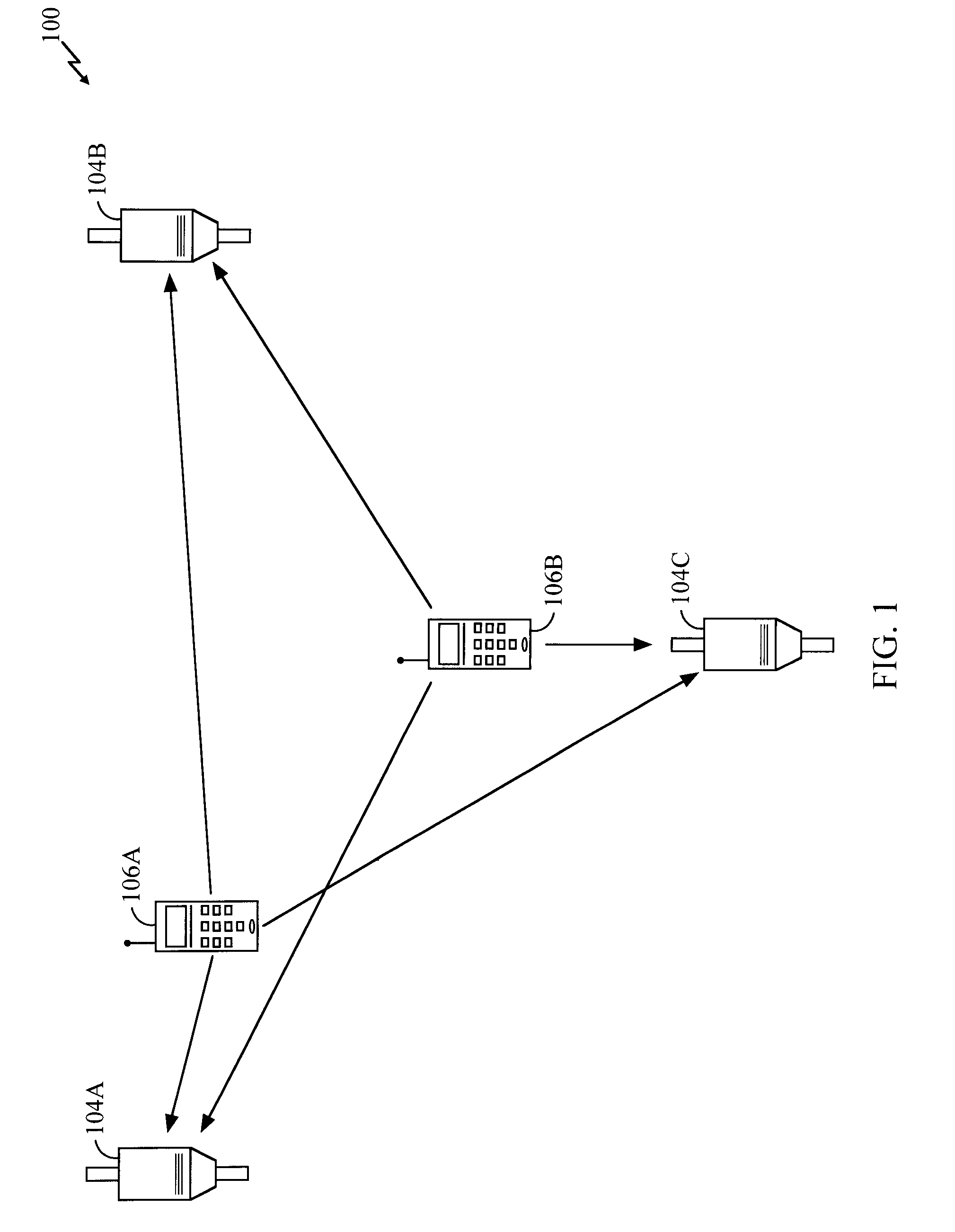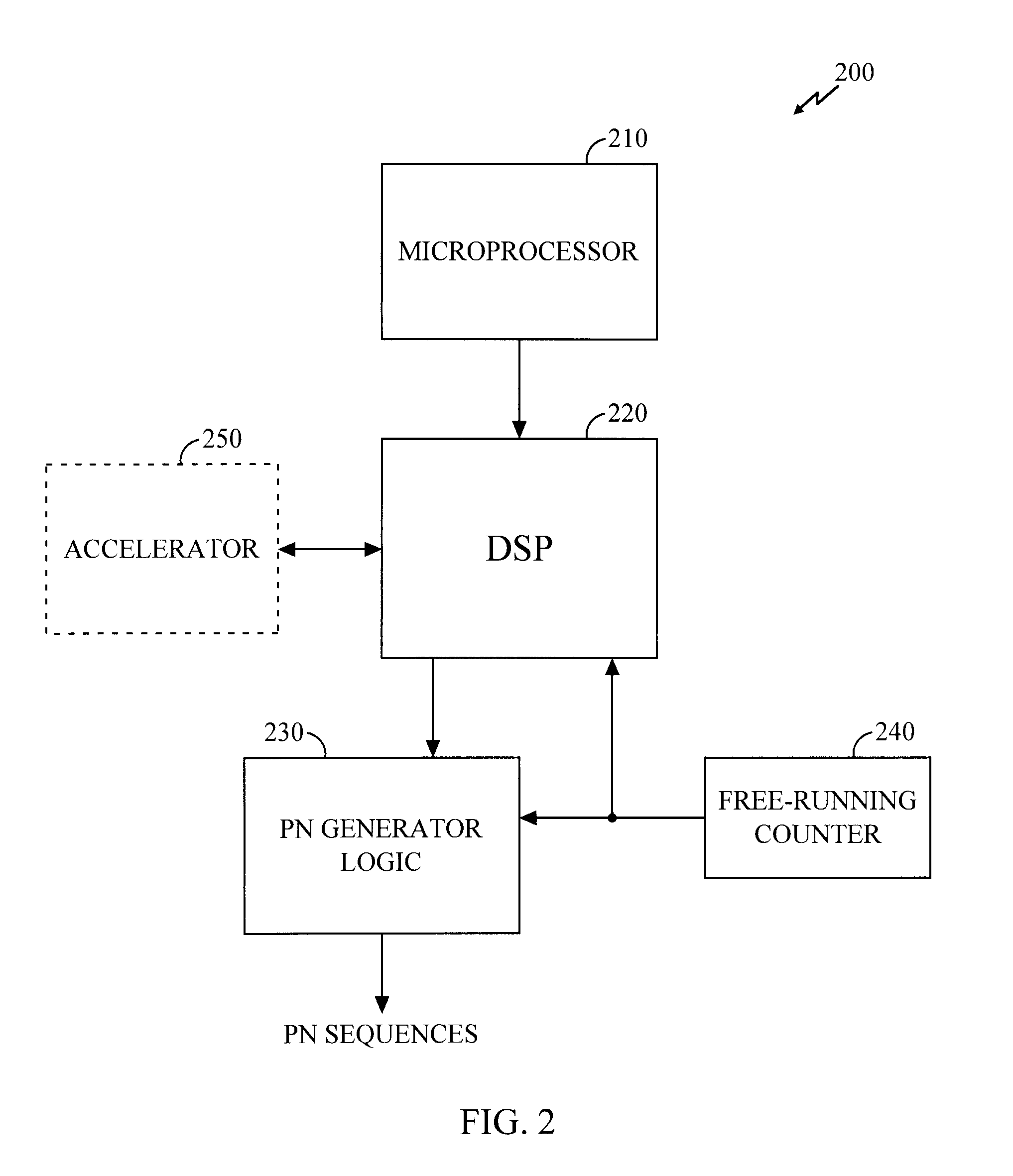Multi-sequence fast slewing pseudorandom noise generator
a pseudorandom noise and generator technology, applied in multiplex communication, instruments, transmission, etc., can solve the problems of prohibitively expensive generalized fast slewing techniques, system limitation, and small variable time delay between reading the free-running counter, so as to reduce the slewing time, increase the acquisition speed, and accelerate the finger lock
- Summary
- Abstract
- Description
- Claims
- Application Information
AI Technical Summary
Benefits of technology
Problems solved by technology
Method used
Image
Examples
Embodiment Construction
FIG. 1 is a diagram of a wireless communication system 100 that supports a number of users, and which can implement various aspects of the invention. System 100 may be designed to support one or more CDMA standards and / or designs (e.g., the IS-95 standard, the cdma2000 standard, the HDR specification). For simplicity, system 100 is shown to include three access points 104 (which may also be referred to as base stations) in communication with two access terminals 106 (which may also be referred to as remote terminals or mobile stations). The access point and its coverage area are often collectively referred to as a "cell".
Depending on the CDMA system being implemented, each access terminal 106 may communicate with one (or possibly more) access points 104 on the forward link at any given moment, and may communicate with one or more access points on the reverse link depending on whether or not the access terminal is in soft handoff. The forward link (i.e., downlink) refers to transmiss...
PUM
 Login to View More
Login to View More Abstract
Description
Claims
Application Information
 Login to View More
Login to View More - R&D
- Intellectual Property
- Life Sciences
- Materials
- Tech Scout
- Unparalleled Data Quality
- Higher Quality Content
- 60% Fewer Hallucinations
Browse by: Latest US Patents, China's latest patents, Technical Efficacy Thesaurus, Application Domain, Technology Topic, Popular Technical Reports.
© 2025 PatSnap. All rights reserved.Legal|Privacy policy|Modern Slavery Act Transparency Statement|Sitemap|About US| Contact US: help@patsnap.com



